Homelessness has increased by more than 5 percent over the past few years – but, that’s not even capturing the full picture. Despite the specter of evictions, we’re paying scant attention to it.
One of the most under-reported issues in America is the homeless crisis. Even with a major spike in evictions looming – as the Supreme Court recently invalidated a Biden administration eviction moratorium – we’re not having a national conversation about it. We’re seeing signs of it flashing before our eyes, but communities have not yet been collectively moved to tackle it.
The National Alliance to End Homelessness reported an average of 553,742 people in America who are currently homeless; yet those are 2017 numbers – we know that pandemic has pushed a major increase in those numbers: by the time of the NAEH’s 2020 report, there were a reported 580,466 homeless individuals. The 2017 number was revised to 550,996. Still, that represents a more than 5 percent increase in 3 years. We see the increase illustrated in these graphs …
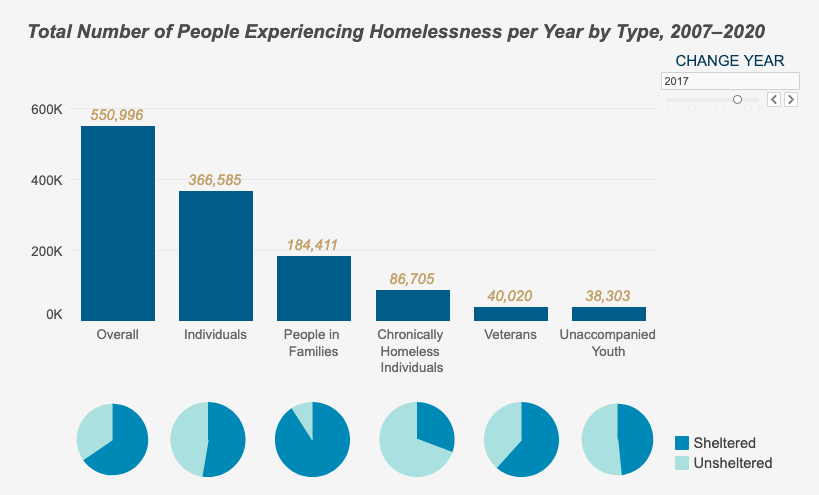
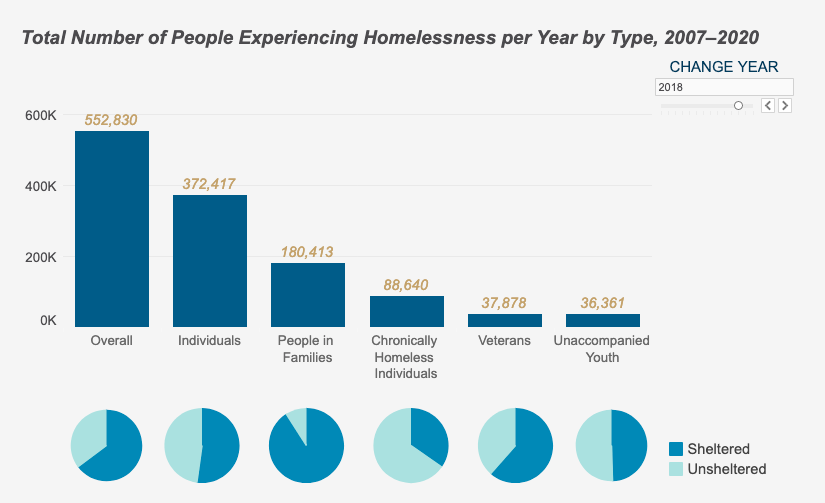
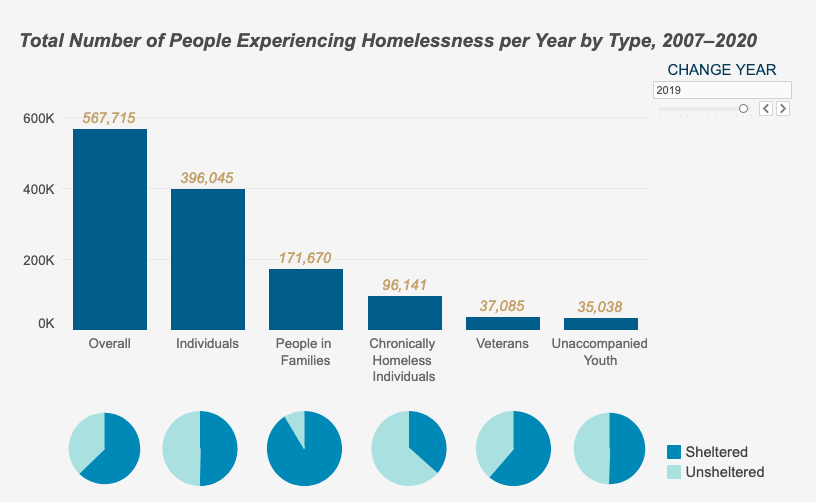
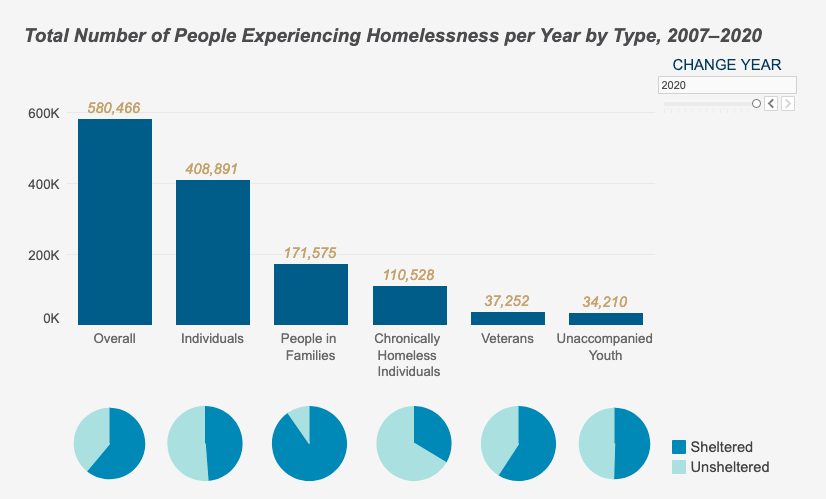
Each year more and more people are losing housing or find themselves unable to retain housing, thus leaving them as homeless. This has been an ongoing problem for years and, yet, the news about homelessness is not as continually highlighted in media as it should be. Homelessness affects all ages and race groups and there are certain factors contributing to this surge.
Each state in America has their percentage of homelessness in America. As of now, according to the United States Interagency Council on Homelessness, California holds the highest number of homeless people, followed by New York and Florida.
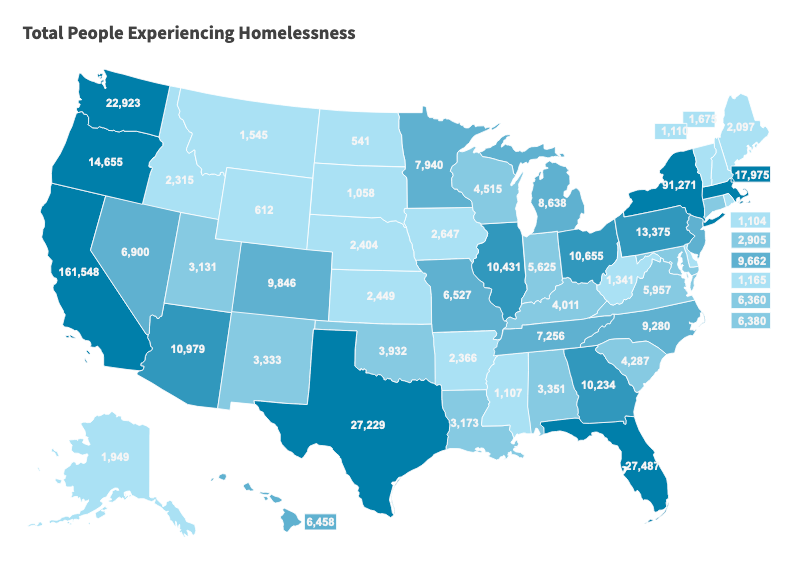
However, according to U.S. Housing and Urban Development data, the District of Columbia, New York, Hawaii and California have the highest per capita rates of homelessness …

However, this should come as no surprise considering these four states are considered among the most expensive states for rent with California coming in at number one, Hawaii coming in at two, and New York at number sixteen. With rent continuing to rise in these states, affordable housing has not been available to many people and has played a driving role in this current homeless crisis.
Along with non-affordable housing, low minimum wage and persistent unemployment and under-employment for many communities also play a part in this nationwide crisis. Right now, in California, the minimum wage is currently set at $14.00 which is certainly not enough to even afford a one-bedroom apartment. These wages are not enough to make a living and even though there are people out there making ends meet it’s just by a thread. Unemployment rates are still somewhat high in many states, particularly for non-White populations, according to data from the Economic Policy Institute …


Inability to find jobs with livable wages makes it hard for people to adequately support themselves or their families. Even if a job opportunity is presented to a person, there is no guarantee of an escape door from the path of homelessness.
Clearly, this won’t be solved overnight and it will take time, dedication, and public acknowledgement to find a resolution. A few solutions include housing assistance, more job opportunities, and housing that’s actually affordable. Housing assistance models, such as Rapid Re-Housing, are proven to help combat homelessness.
Rapid re-housing is a primary solution for ending homelessness. It has been demonstrated to be effective in getting people experiencing homelessness into permanent housing and keeping them there. By connecting people with a home, they are in a better position to address other challenges that may have led to their homelessness, such as obtaining employment or addressing substance abuse issues. The intervention has also been effective for people traditionally perceived to be more difficult to serve, including people with limited or no income and survivors of domestic violence.
This type of wraparound provides quick and easy housing to those who are in need without providing the required information such as employment and income. In addition, it also offers an opportunity for communities to effectively address mental health and disability challenges. There should also be various programs available to help the homeless obtain employment or to tap into other forms of economic development. Conventional assumptions about job searching automatically stigmatize the homeless: it can be enormously difficult for homeless individuals to get a job when they are required to put down an address, have reliable transportation, possess a working phone, and meet traditional cosmetic, clothing and grooming standards when filling out an application or participating in an interview.
If there were programs that could help with such requirements and provide those who are in need with what they can, it could go a long way towards eliminating homelessness in the United States. It’s better than nothing: chronic homeless is costing the average taxpayer $36,000 annually – yet, NAEH argues …
… [C]osts on average are reduced by 49.5% when they are placed in supportive housing. Supportive housing costs on average $12,800, making the net savings roughly $4,800 per year. Congress will need to invest in permanent supportive housing to drive progress while reducing tax payers’ spending. Congress should provide at least the $2.487 billion in the House bill for HUD’s Homeless Assistance Grants in FY 2017.
The more awareness around this problem, the closer we get to fixing it. Increased media coverage could make a tremendous difference in not only removing stigmas, but forcing communities to make necessary investments on the front end.


